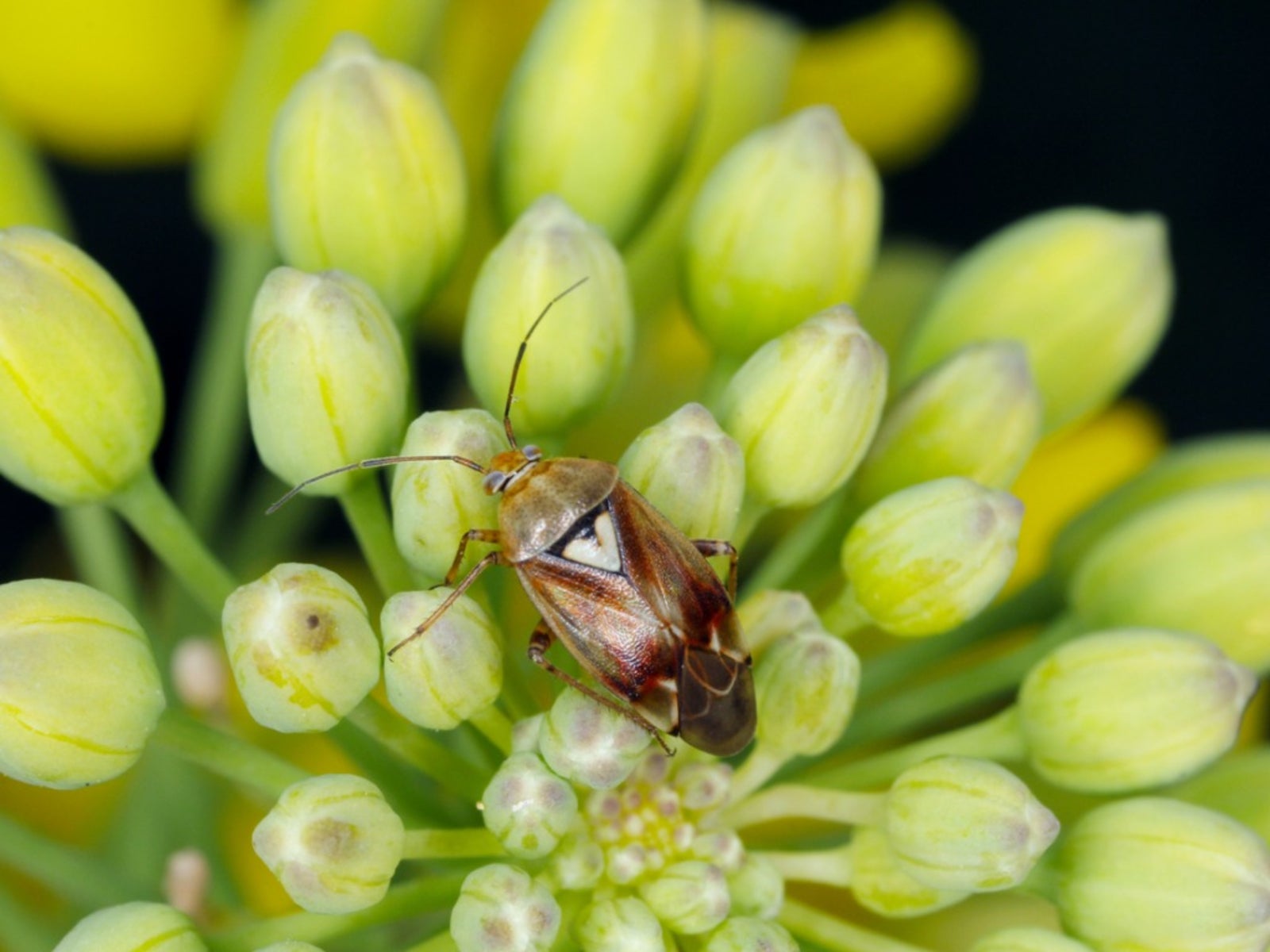What Are Lygus Bugs: Tips For Lygus Bug Insecticide Control


Lygus bug, also called tarnished plant bug, is a destructive insect that causes serious damage in fruit orchards. They also feed on strawberries and a number of vegetable crops and ornamental plants. Controlling lygus bugs centers around good spring and fall cleanup to eliminate places where the insect may overwinter because insecticide use isn't very effective and is not generally recommended.
What are Lygus Bugs?
Lygus bugs are ¼-inch (6 mm.) long insects that are green or brown with yellow markings. Their nymphs are smaller than the adults and flightless. The insects produce three or more generations each year. The tarnished plant bug overwinters as adults in plant debris and weeds in areas adjacent to gardens and around fruit trees. The adult females lay their eggs on a number of broadleaf plants including many weeds. After the nymphs hatch, they also spend the winter hiding in plants and debris. The best way to eliminate the insect is to clean up these areas so that the insect has no place to spend the winter.
Lygus Bug Damage
The most obvious lygus bug damage is pitting on buds, fruit, and stem tips as well as blackened shoot tips. Lygus bugs begin feeding on developing buds in fruit trees in early spring, immediately arresting their development. The feeding may completely prevent dwarf trees from setting fruit and seriously impact fruit production on standard trees. On developing peaches, pears, and strawberries, lygus bugs cause dimpling that is called catfacing (commonly seen in tomatoes). Lygus bugs also carry fire blight disease, which they spread throughout the area as they feed. Fire blight is a devastating disease that is difficult to control.
Controlling Lygus Bugs
If you want to try lygus bug insecticide, use it early in the morning when the bugs are less active. Try three sprayings with pyrethrum, spaced two or three days apart. Pyrethrum is a contact insecticide that will kill the insects, but when they are present in large numbers the overall effect on the population is minimal. For severe infestations, dust with sabadilla. Lygus bugs are attracted to white sticky traps. Use 10 inch (25 cm.) squares of white material coated with Tanglefoot or petroleum jelly. Place them 2 ½ feet (62 cm.) above ground in fruit orchards or adjacent to, but not above, susceptible plants in the garden. White sticky traps are effective for monitoring insect populations and may help reduce the insect population. As a monitoring device, they can help you decide when to spray insecticides.
Sign up for the Gardening Know How newsletter today and receive a free copy of our e-book "How to Grow Delicious Tomatoes".

Jackie Carroll has written over 500 articles for Gardening Know How on a wide range of topics.